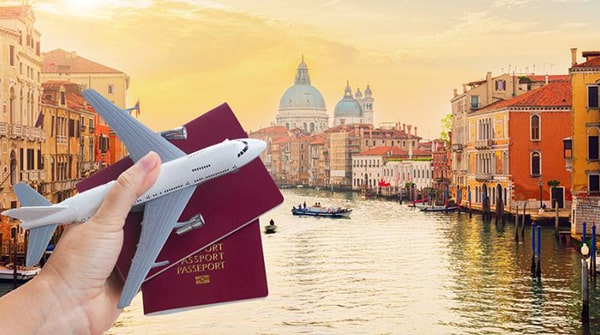Visit Italy, and understand what generations of student travelers have been seeing in this magical peninsula. There are people to meet, art and architecture to bask in, and the ancient history of the place is unparalleled. This country is home to the Sistine Chapel, after all, and you’ll be right in the Pope’s backyard. There are a ton of places to visit in Italy, sure, like the Colosseum and the Venetian canals, but we can’t talk about Italy without mentioning the food.
Every cafe is a culinary adventure, every restaurant is the home of a master chef, and every bakery is something to write home about in Italy. Fresh vegetables, fruit, meats, and baked goods are not just in abundance; they’re the standard. Incredible food and incredible sights are around every corner there, so read travel tips for Italy and experience it yourself.
Language
Italy is, of course, home to the romance language of romance languages, Italian. If you are roughly familiar with another Romance language (Spanish, Portuguese, French, or Romanian), you’ll probably be able to read some signage and find your way around. Italians might giggle at you if you mix up Italian and Spanish, though. It’s always handy to have a phrasebook or a translator app on your phone, so you can type in questions and show them to locals for some help.
Currency & Tipping
Like a majority of mainland Europe, students who travel to Italy will use the Euro. As of right now, the Euro is .93 for every US dollar, so they’re comparable. Italy is still a cash culture, but they’re slowly starting to accepting cards more and more. Tipping on a trip to Italy is a bit different from tipping in the US because a service charge is automatically added to your bill in restaurants. For good service, you can round up your bill a few Euros to say “Grazie.”
Italian Cuisine
A trip to Italy needs to have some focus on local cuisine. It’s all about freshness in Italy, local fresh meats, veggies, and cheeses. Italians have a famously rigid four-course structure to a classic meal, starting with the antipasto, an appetizer of meats, cheeses, and bread. Next comes the Primo, usually a pasta dish, then the Secondo, usually fresh fish or meat. Last is the Dolce, which means “sweet” in Italian. That dessert is usually fresh fruit and local pastries.
Tech Tips
Italy has quite a few free public Wi-Fi spots, and there is more and more every year. Before you go, be sure to sign up for “Free Italia WiFi,” a service that gives you one login and password for a bunch of free WiFi services. Take a power adapter with you when you go, too. Italy has the same plugs as most of Europe, but they’re different from the US outlets, in both shape and power output. An adapter makes sure that you can plug in, and that your electronics aren’t damaged.
Cultural Differences
The Italian vibe might be a little more relaxed than you’re used to, almost like you’re not the only one on vacation. Everything is a bit more relaxed, a bit lower stress, and that can be both rejuvenating (like when you’re sipping a drink at a street corner cafe) and frustrating (when you can’t find your server at that same cafe, and you want to pay your bill). The Italian locals tend to be vocal and passionate, and won’t be afraid to speak loudly or with their hands.





